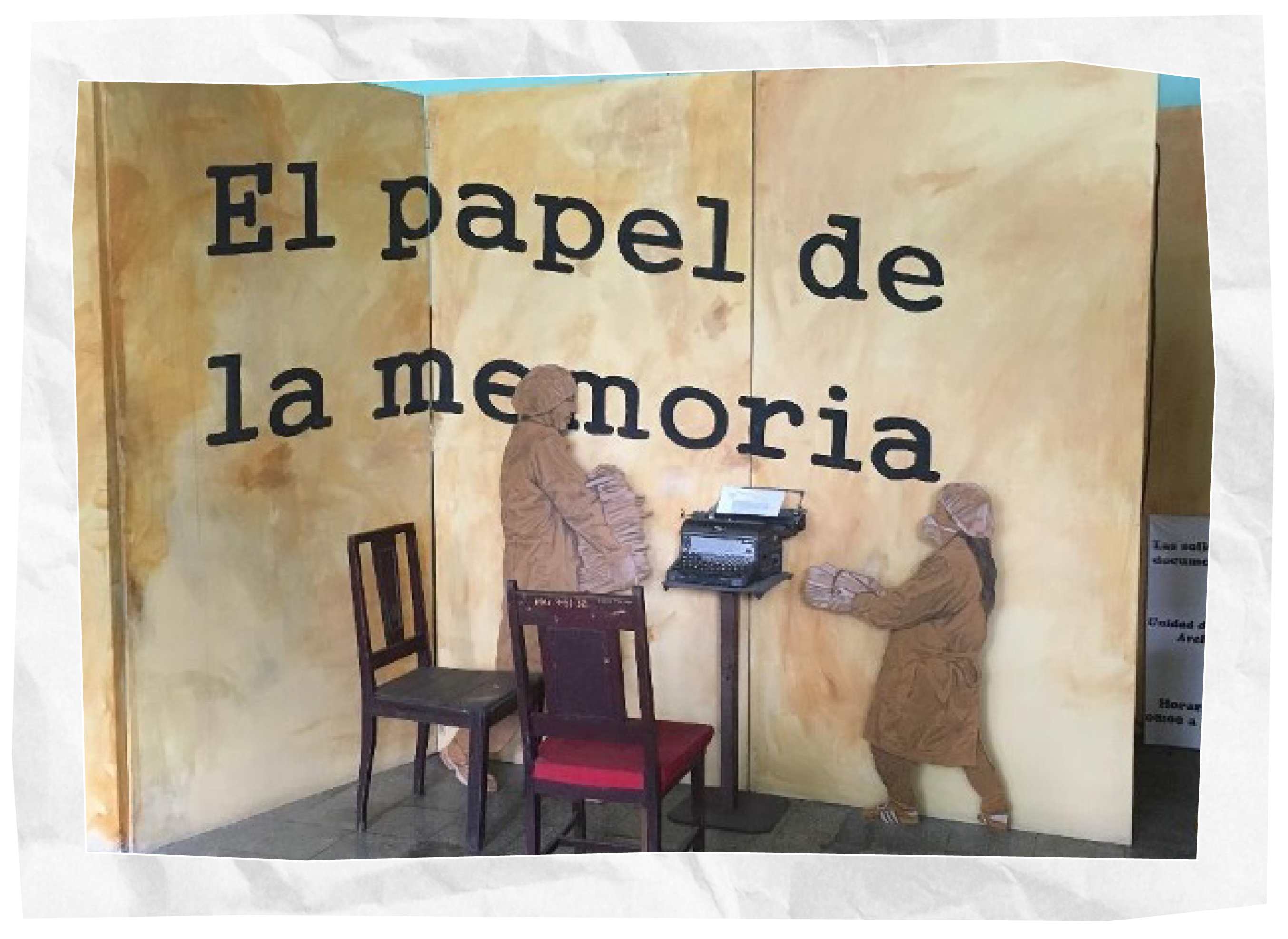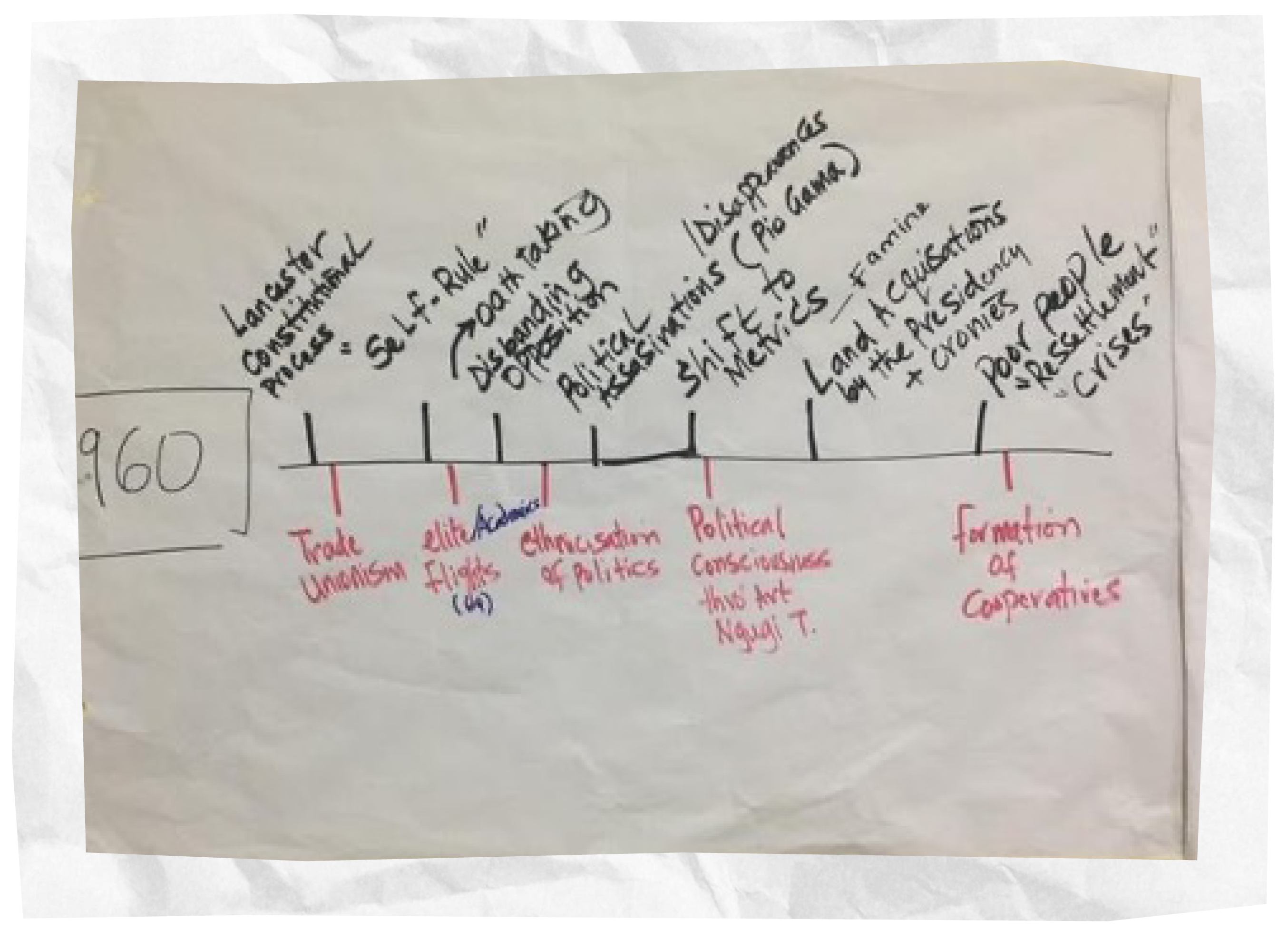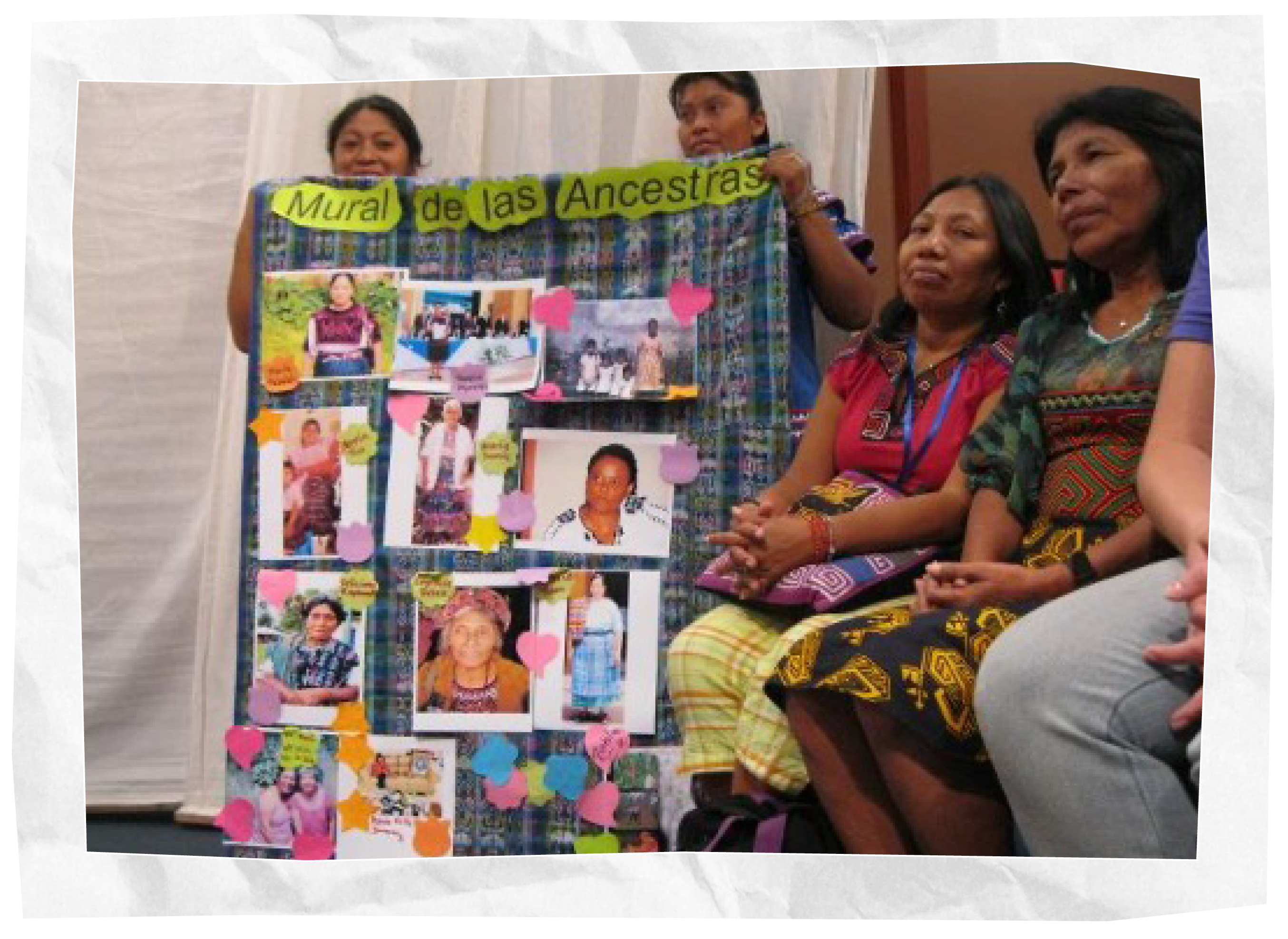Theme 3: Learning from History
 Retracing our history is critical to understanding power, struggle, and the lessons of our ancestors. Invite people to think about whose voice, story, experience, and contributions are visible in education systems and national discourse – and whose are invisible. In Chile and Guatemala, for example, processes of recovering historical and collective memory disrupted the narratives of violent dictatorships and affirmed stories of resistance that continue to guide the path today.
Retracing our history is critical to understanding power, struggle, and the lessons of our ancestors. Invite people to think about whose voice, story, experience, and contributions are visible in education systems and national discourse – and whose are invisible. In Chile and Guatemala, for example, processes of recovering historical and collective memory disrupted the narratives of violent dictatorships and affirmed stories of resistance that continue to guide the path today.

Photo © 2018, Lisa VeneKlasen
Activity 4: Constructing a timeline
Activity 4: Constructing a timeline
Materials: Blank timeline on flip chart paper along a large wall
Use one or two flip chart pages per decade, each section labelled with years, depending on how far back you want to go: 1960–69, 1970–79, 1980–89, 1990–99, 2000–2009, 2010–2019, 2020–present
Sticky notes or cards in five different colours, markers
This participatory historical timeline reveals trends of power and conflict, and of struggle, resistance, and transformation. You need to prepare. The group brings their own knowledge and responses to the process, but you should know about the period and setting. Much of the history of struggles for social justice has been hidden. To fill important gaps, invite an older activist or a historian to provide information. Alternatively, show a video, share a reading, or discuss timelines constructed in previous workshops.
Step 1: Pivotal moments
Plenary: To understand the roots of current trends, we will construct a visual timeline of key events that shaped the last 60 to 100 years. (To include the history of colonialism, go back further.)
Small groups: Divide into small groups that are intergenerational to share knowledge across age groups. Each group reflects on these questions for the era or decade that they are focusing on.
- What were the important moments or events of social, political, or economic change – positive and negative?
- At what moments did people organise to challenge dominant powers? What were they challenging, and what did they want?
- What were the most important breakthroughs and gains for social movements?
- Where did social movements lose ground or face repression?
All groups use the same colour cards to note and post on the timeline:
key social, political, and economic turning points (one colour)
challenges and responses led by social movements and civil society (a different colour)
Step 2: Conflict and resistance
Plenary: Groups post their stickies on the timeline. Each group in turn describes what was happening in their section of the timeline. They focus on one or two particularly important moments, highlighting the relationship between the events and the responses by a social movement or civil society.
Small groups: In the same groups, go deeper – discuss one or more of these questions:
- What do you see in the timeline about how change happens from decade to decade?
- What can we learn about the battles over who and what matters, and who controls access?
- What can we learn from examining history through the lens of factors including class, gender, sexuality, race, and ethnicity?
- What can we learn about the use of violence and threat of violence to block and silence social justice voices?
- What can we learn for our own ways of organising and change strategies?
Step 3: The struggle over ideas and beliefs
Plenary: Now, focus on the role of ideas and beliefs. What ideas and beliefs were challenged? What new ideas were put forward?
Small groups: On stickies or cards, note key phrases and words.
- With what ideas and beliefs did those in power legitimize their actions and undermine people’s demands and agendas?
- What ideas and beliefs animated resistance, social change, and liberation struggles? (For example, trade unionism and cooperatives shaped the 1960s in Kenya.)
- How were these ideas promoted and amplified?
Plenary: Groups post their notes on the timeline and explain each briefly. Engage the group in a deeper conversation about the power of ideas and beliefs, both for dominant interests and for those seeking to make change.
- What can we learn from our timeline about how ideas and beliefs define public narratives?
- At what point/s do you see the most successful use of ideas and beliefs? How do these ideas and beliefs shape struggles today?
Close the timeline process with a brief summary of insights about the zigzag of history. Note how change generates conflict and backlash by dominant interests. List insights about strategy and movement organising to use later (see Chapter 6: Power and Strategy). Keep the timelines for power analysis in Chapter 3: Making Sense of Power.
Step 4: Drawing inspiration and lessons from history
Plenary: We can learn a great deal from the brutal struggles of our histories, but we can also be inspired by the courage, creativity, and examples of our ancestors.
Individually: Think back over the timeline discussions, and then write your answers to these questions on different colour cards.
- What inspiration can we draw from the timeline?
- What lessons emerge about the push and pull of power and change?
Plenary: Participants take turns to post their cards on the timeline, each announcing what inspiration they have drawn from the past. When everyone has posted their cards, identify common threads and contrasts in perspective or interpretation. Cluster the sticky notes (if this helps) to identify common sources of inspiration.
Reflecting on the lessons, draw out the push and pull over time between dominant interests and those fighting for social justice.
- How did those who came before us organise to build common ground?
- How did they change hearts and minds?
- How did they defend themselves?
- Where did they fall short?
Download this activity.
Timelines
In this example from Kenya, participants divided the last 80 years into decades. For each decade, a group named the key moments, turning points, and contributions of social movements and civil society. On the top line, the group noted key moments over the course of the 1960s in their country:
Lancaster constitutional process, ‘self-rule’, oath taking, disbanding opposition, political assassinations/ disappearances, shift to metrics, famine, land acquisitions by the president and cronies, poor people’s ‘resettlement crises’
In red underneath, they noted responses and organising over the decade:
trade unionism, elite/academic flight, ethnicization of politics, political consciousness through art (Ngugi wa Thiongo), formation of cooperatives


Mural of Ancestors
A moving and inspirational process involves naming and telling the story or sharing a quote from an ancestor upon whose shoulders we stand.

______________________________________________________________________________
8 Popular attribution.
9 JASS Mesoamerica Workshop on Extractives, 2017
